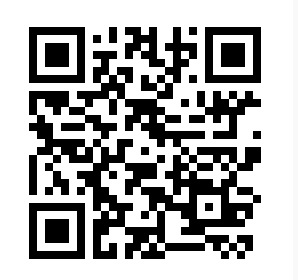The ARC Filter
Once data has been received, it must pass through a number of perception filters. Think of this as the firewall for the human brain. The data’s context and content must first be evaluated and analyzed for relevance. This is a critical capability because the human animal is absorbing huge amounts of data every second. So much data that should all of this data be presented to the individual’s attention, they would be overwhelmed resulting in the inability to take action. To prevent this overload, data will first pass through the Accept, Reject, or Consider (ARC) filter.
Data that is labeled as Accepted or for Consideration will then pass through a series of filters to classify its truthfulness, importance, and meaning. In previous published descriptions this was known as adding color or attributes to the data, meaning that the data is assigned attributes based upon how it will fit into the current world view. Assignments of attributes (or adding of color) based upon the held world view greatly contributes to the observed phenomena of two people receiving the exact same data, but drawing two completely different meanings from it.
Starting with ARC filter, as the name implies, data is evaluated based upon the world view, personal experience, and education of an individual to determine if it holds relevance. Take for example two teenage girls, one living in Beverly Hills California, and the other living in the savanna of Africa. Each girl has a very different view of about what is important. One day, both girls are walking next to a field with tall vegetation within their respective parts of the world. In each field, the vegetation is moving with the progress of some yet unseen being moving toward them. In each case, the girl’s eye captures the visual data. This is where the world view effect on the ARC filter manifests itself. In the case of the girl on the savanna, her world view contains the awareness that certain dangerous wild animals are part of her environment. Her personal experience may include knowledge of others who may have been attacked, and her education included shaping her thinking to have fear or concern of such dangers. The data of the movement is classified as relevant and is accepted for her attention. The attributes or color filters will classify it as critical so that the information will be brought with the highest possible emotional response to the girl’s attention. Meanwhile, for the girl in Beverly Hills this data doesn’t make it pass her ARC filer and is rejected as irrelevant because in the world view held by her, this information has little relevance compared to social media, her social status, or how much money she can spend today at the mall. In our example, the Perception ARC filter handles the same data input of both girls very differently, based upon the world views held by each of them. It is clear that positive awareness of the relevance of data within the individuals world view is instrumental in determining the rating applied to it by the ARC filter. This is why we see examples of numerous individuals everyday presented with evidence that contradicts the position they hold on any particular topic and yet they remain unaffected and indifferent to that data. It also demonstrates that individual’s exercise a degree of conscious control over their ARC filter, in other words a degree of choice over what information they elect to consider.
The individual world view is an area that can be purposely influenced. In Wild Humans, an individual will develop a world view from their parents, community, and personal experience. These world views may have been limited to the local environment, but were useful in that they were well adapted to promote success within the environment the individual lived in. Later when humans organized, leaders of these groups introduced the concept of education. Before proceeding we need to discuss the meaning of the word education. A web definition I came across dovetails perfectly into the discussion about how education can and will result in behavior modification. Consider this: An educated person is someone who perceives accurately, thinks clearly, and acts effectively. Notice in the use of the subjective terms “perceives accurately”, “thinks clearly”, and “acts effectively” within the definition? Since these terms and thus the education goals are subjective, success can only be measured against the subjective opinion from the orientation of a certain world view. That view was usually the one held by those in charge. In other words, a goal of education is to provide the context or world view to students so that the resultant behavior from authorized data input is “effective” in the eyes of those who are providing the education. Understanding this demonstrates the dark side of education as well. For example, the seemingly never ending debate of evolution vs creation. The world view held by an individual would determine which side of the debate a person who “perceives accurately” and “thinks clearly” is on. What most “common” people fail to realize is the reason institutions competing for power all throughout history have always sought to gain control of the education of the children. That being, that he who controls the education system shapes the world views of the students to the benefit of those providing the education.
To market public education, the government presented that the reason western nations provide public education is so that the “common” person can become a productive member of society, benefiting both the individual and society. As noble as that may sound, the definition is once again filled with subjective terms such as “productive” and “benefiting” without providing a context on who determines what is productive and what is a benefit. In western nations, being productive normally meant the fruits the leaders received from the application of labor skills, while unproductive individuals produced nothing for their leaders. Benefit was once again defined in terms of the leaders. Remember these concepts were introduced long before the concept of welfare, and it was normal practice that individuals and families took care of themselves. So individuals who were self-reliant or self-supporting, while clearly not a drain on a nation, didn’t enhance the lives of the wealthy or the power of our leaders. These individuals therefore were non-productive and didn’t provide benefit. Like it or not the truth is that the world view held by westerners was provided to them through an education system whose goal was to shape their individual perception of reality to bring it in alinement with the goals of those providing the education.
Consider the following two statements:
- These things I know to be true because the Bible tells me so…
- These are the facts I learned while earning my degree…
If either or both of these statements feels correct to you, then you’re functioning within a world view provided TO YOU so that you “perceive accurately, think clearly, and act effectively” for the benefit and goals of someone else.
To complicate matters, as a person ages, the more difficult it becomes to change or modify their world view. This is part biological, and part physiological but a very real fact. Once an individual reaches adulthood, the world view they hold is pretty much fixed. This is why it is critical to impose the desired world view on children. Only extreme events within a person’s life OR a continuous and conscious directed effort of the individual will change their world view. One of the goals of this paper is to encourage that conscious directed effort because only then can a person escape the mindcage.
At the ARC filter most data that is in conflict with a person’s world view is rejected and is never even brought into their awareness. Sometimes due to inconsistencies within a world view, certain conflicting data will not be rejected outright and be classified by the ARC filter for consideration. Usually the individual will attempt to reconcile this information with their world view. If they are unable to make this reconciliation, the information in most cases will end up classified as untruthful and be dropped. What is interesting is when conflicting data classified for consideration is supported by “evidence” that also supports data previously accepted within the individuals world view. This conflict can only be resolved with a modification to the individuals world view by either accepting the new data, or rejecting the previously accepted data. In either case, it is an opportunity for the individual to realize the limitations of the world view they have been given. Such disruptions to the otherwise smooth flow of the mindcage system are infrequent; however they are also uncomfortable for the individual. Because of this discomfort, by choice, over time the mind begins to “learn” to avoid data that can cause such disruptions. It is by embracing this process to avoid the discomfort that individuals become complicit with their own imprisonment.



